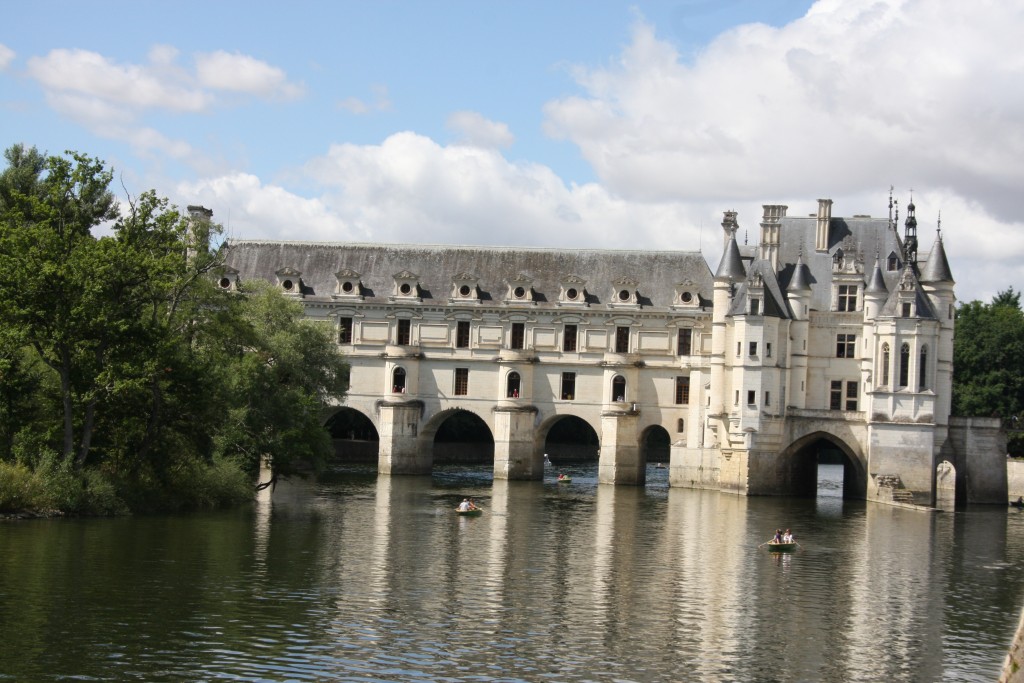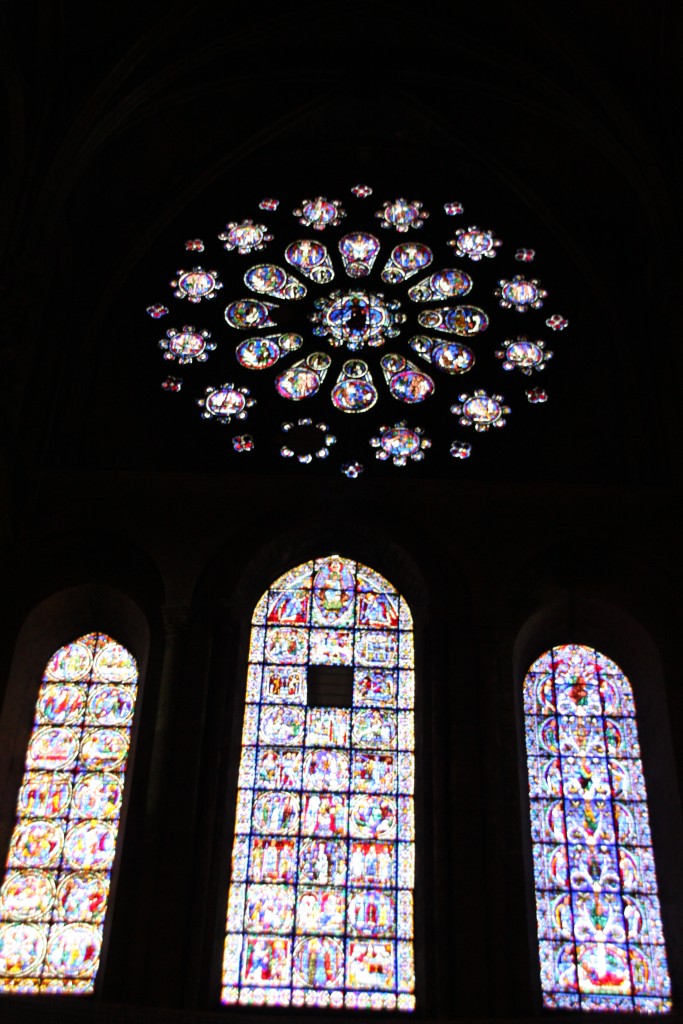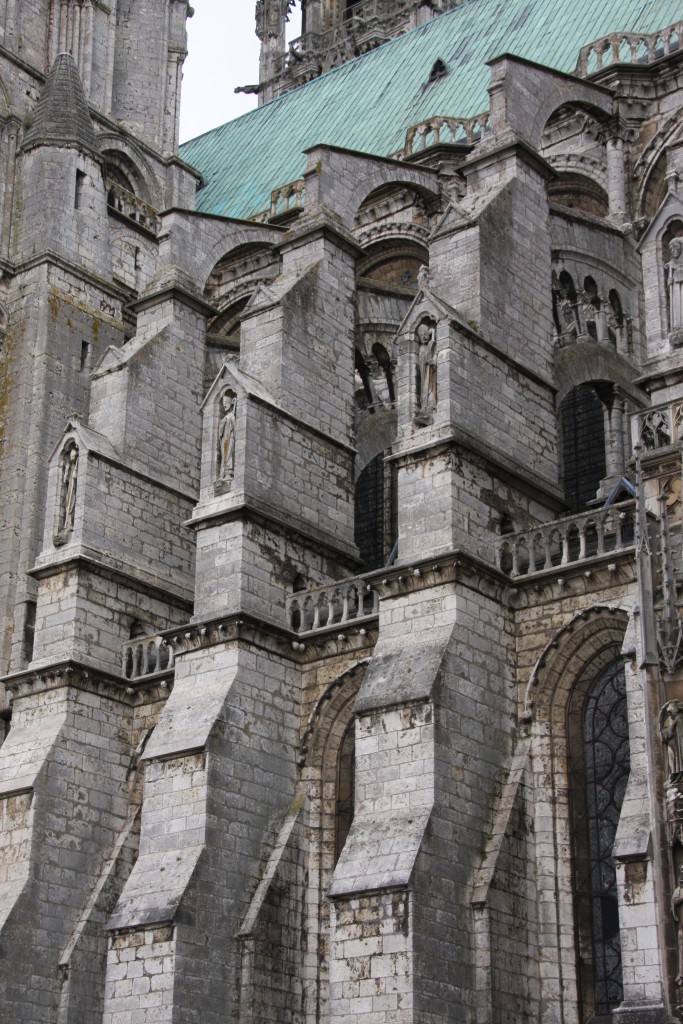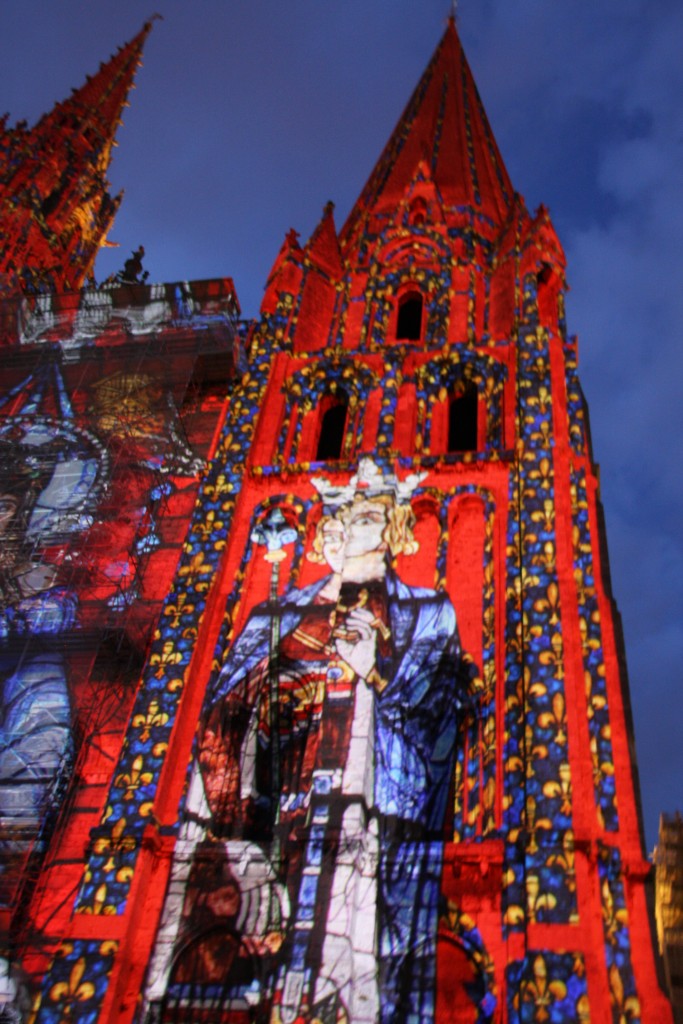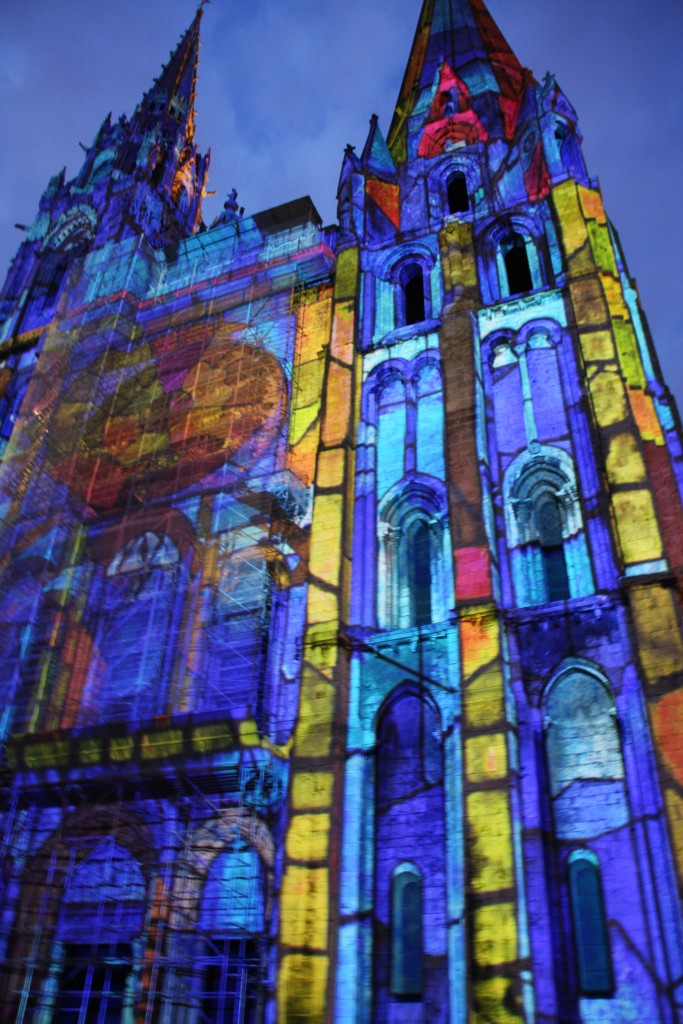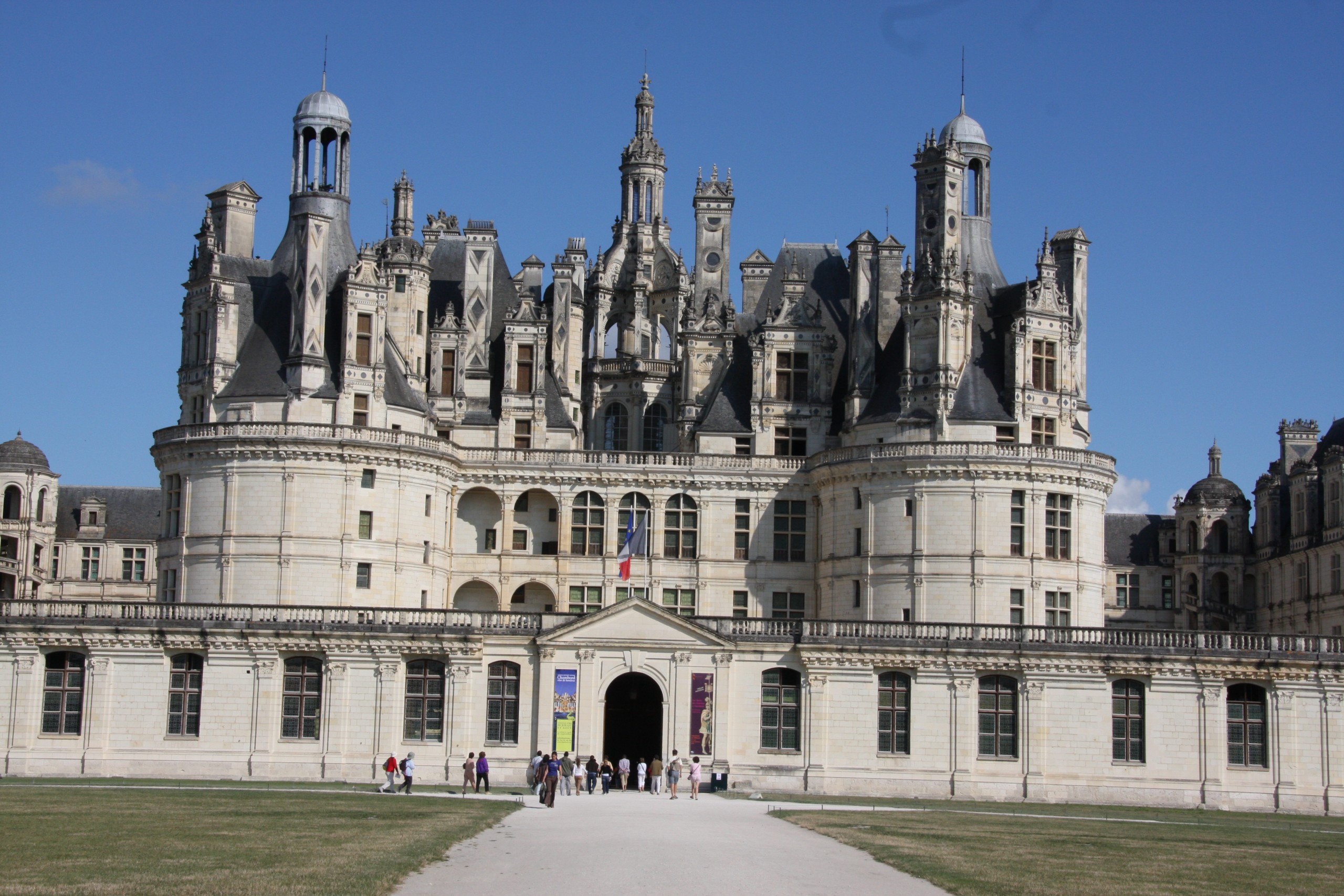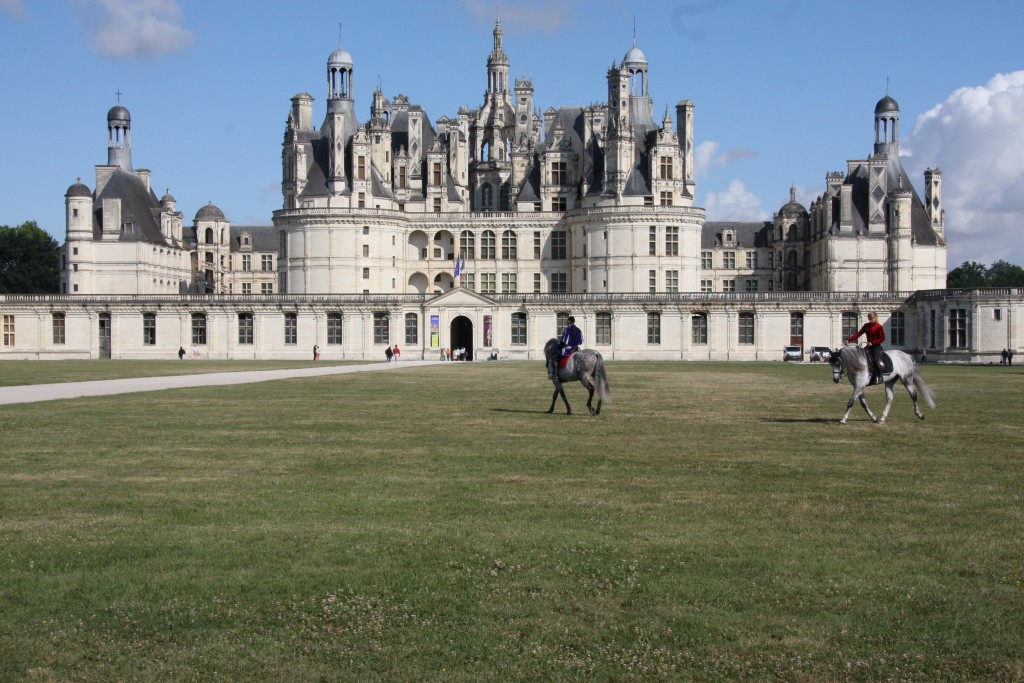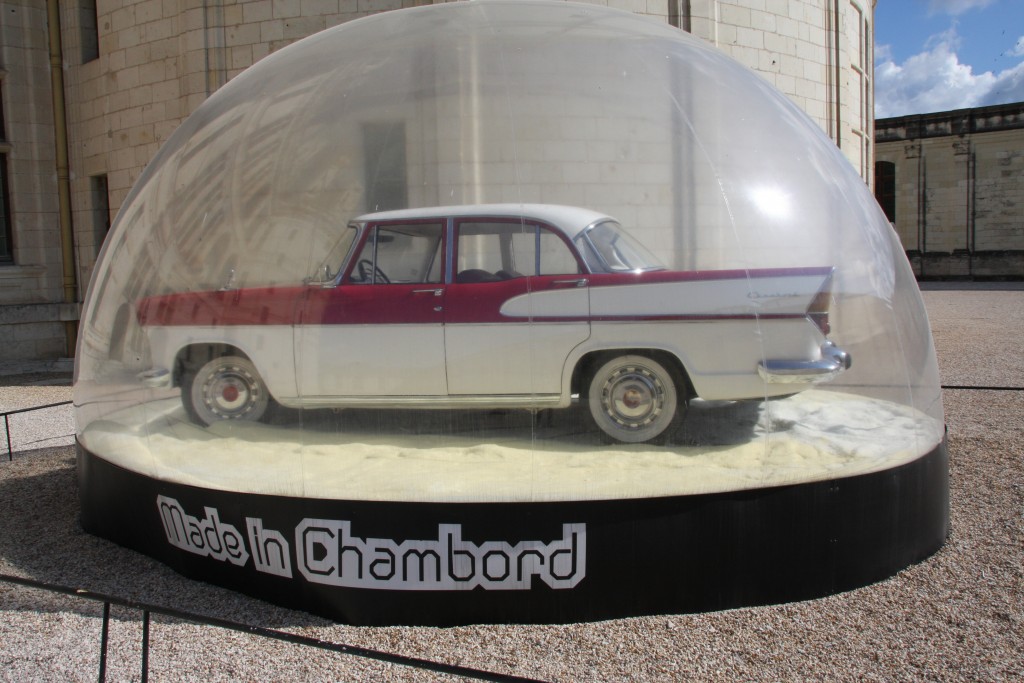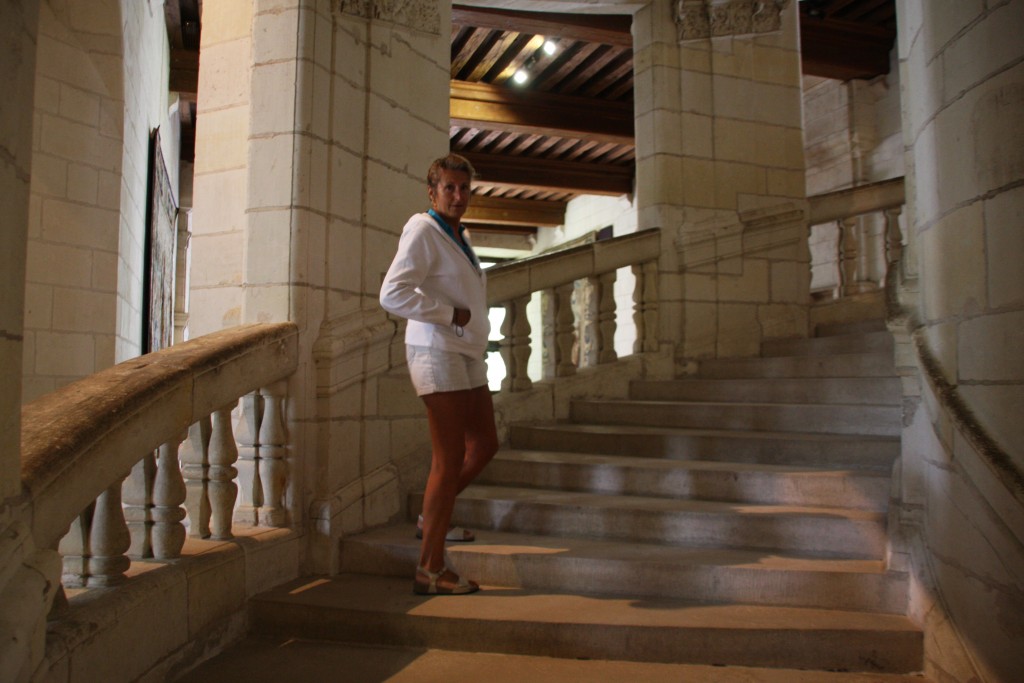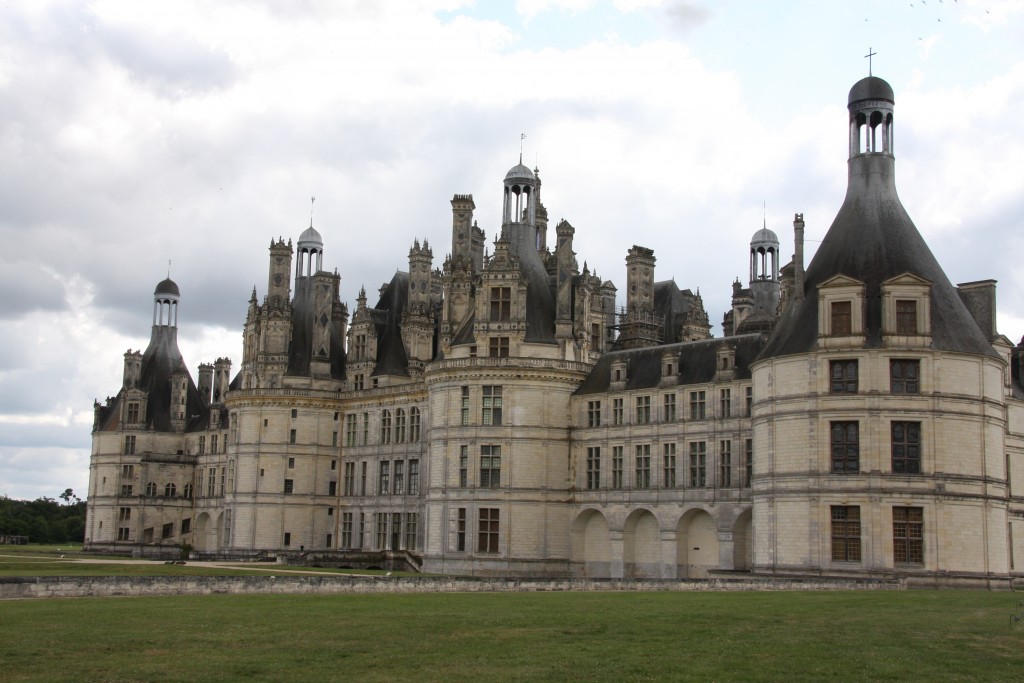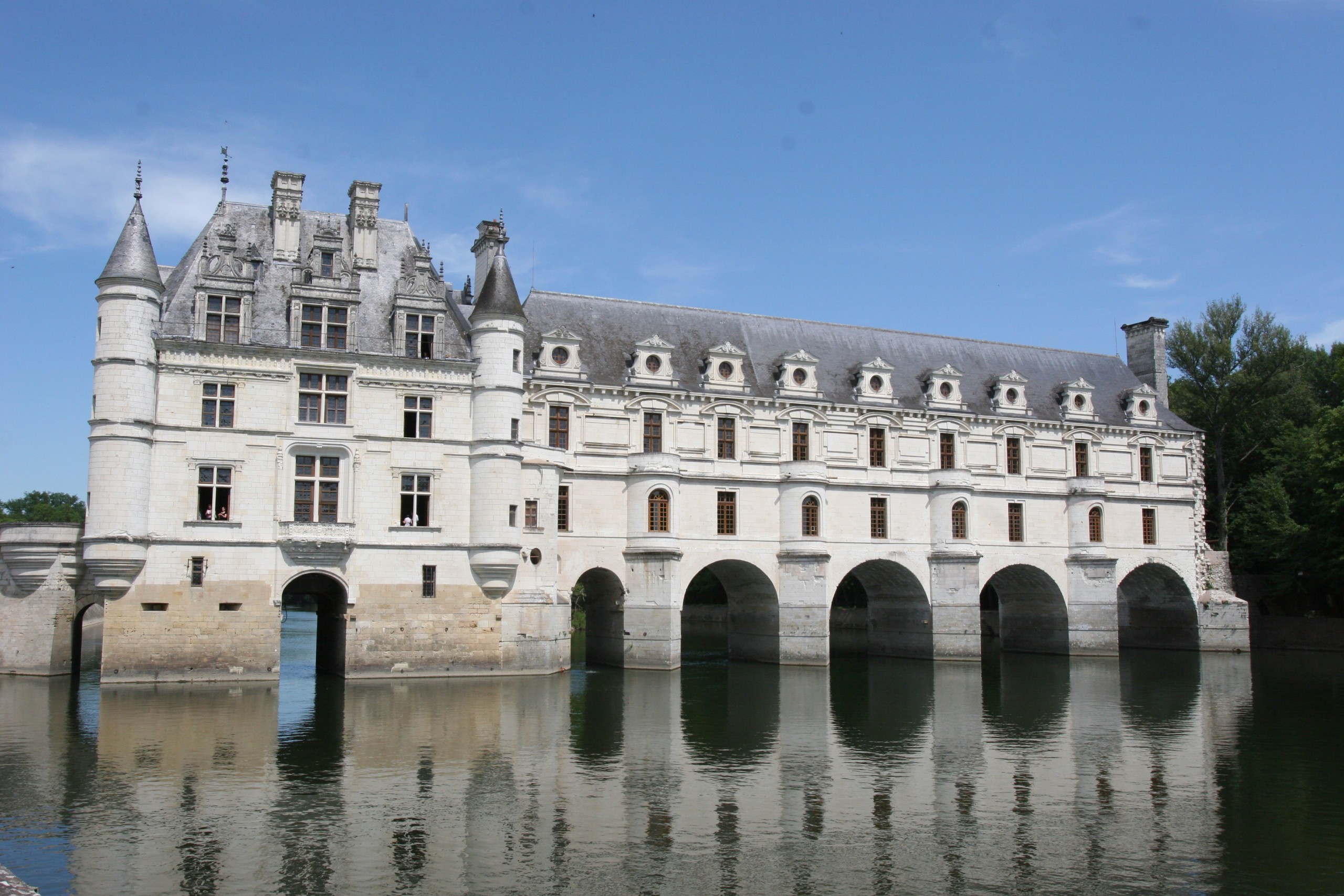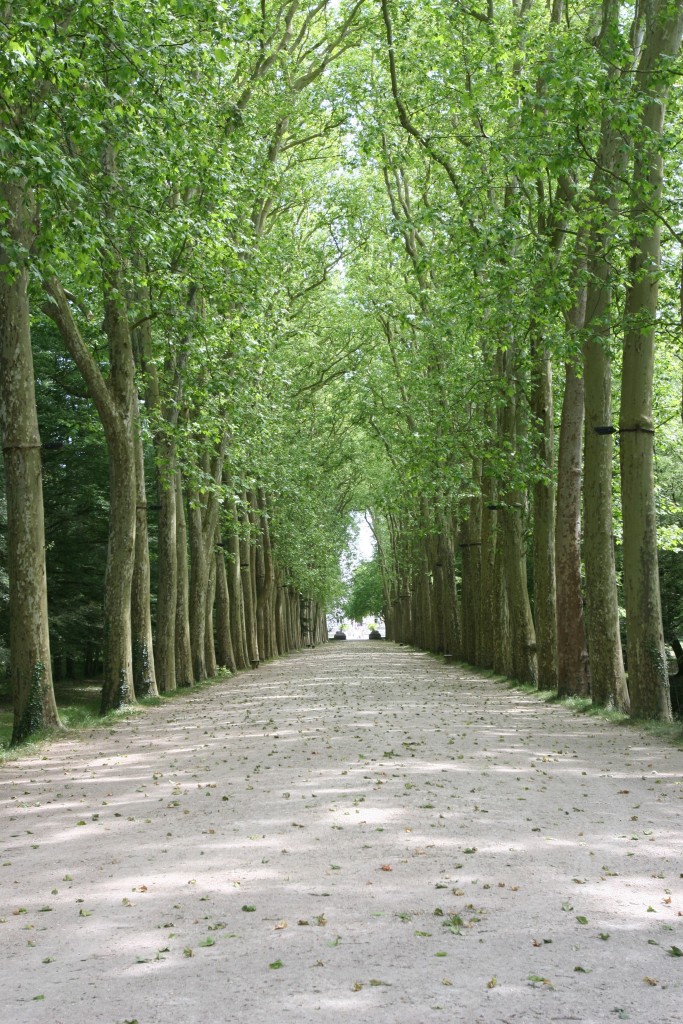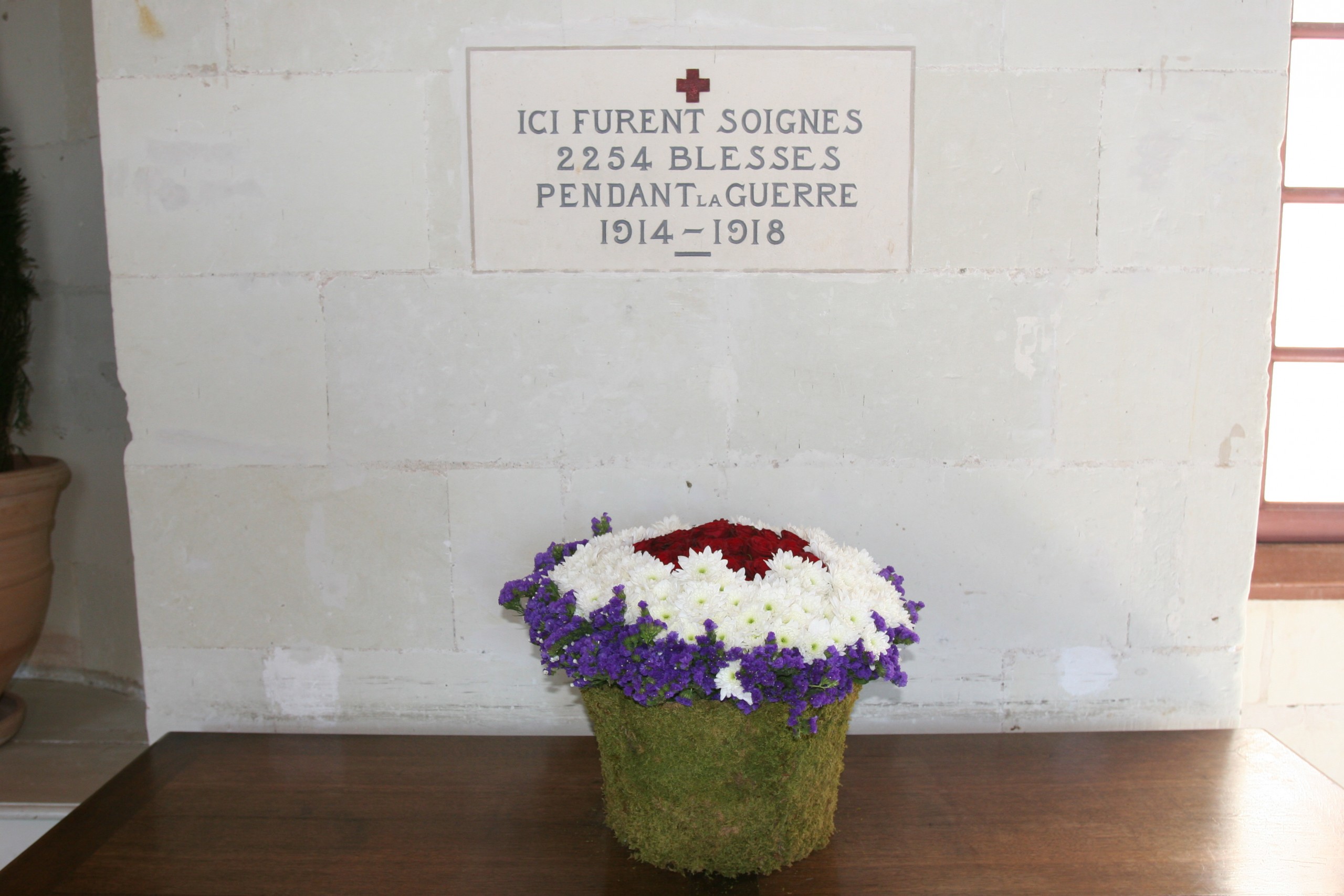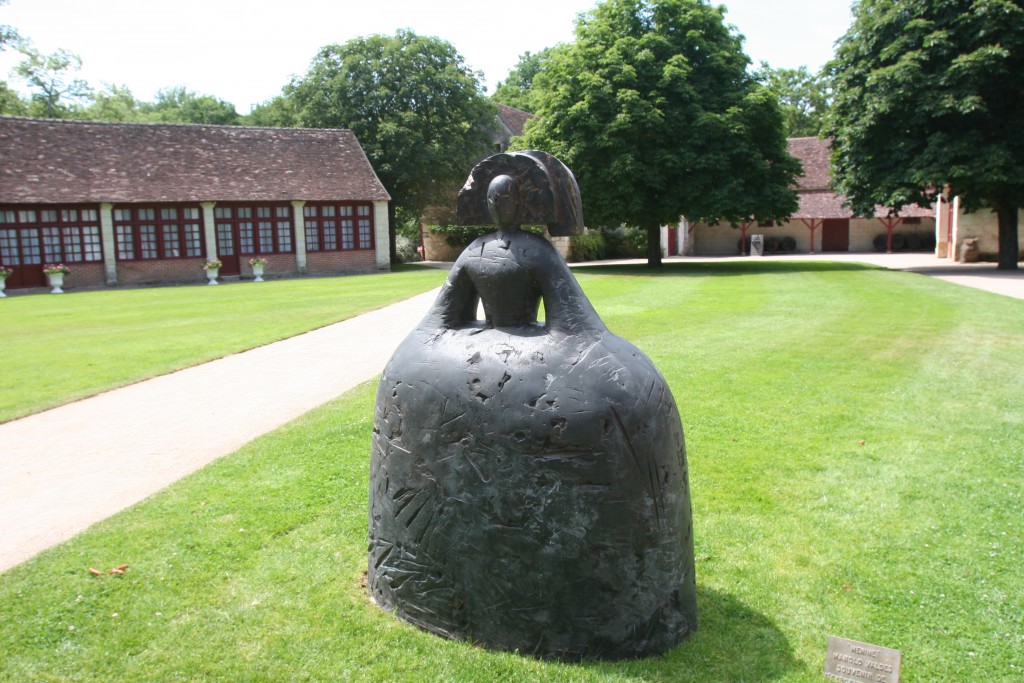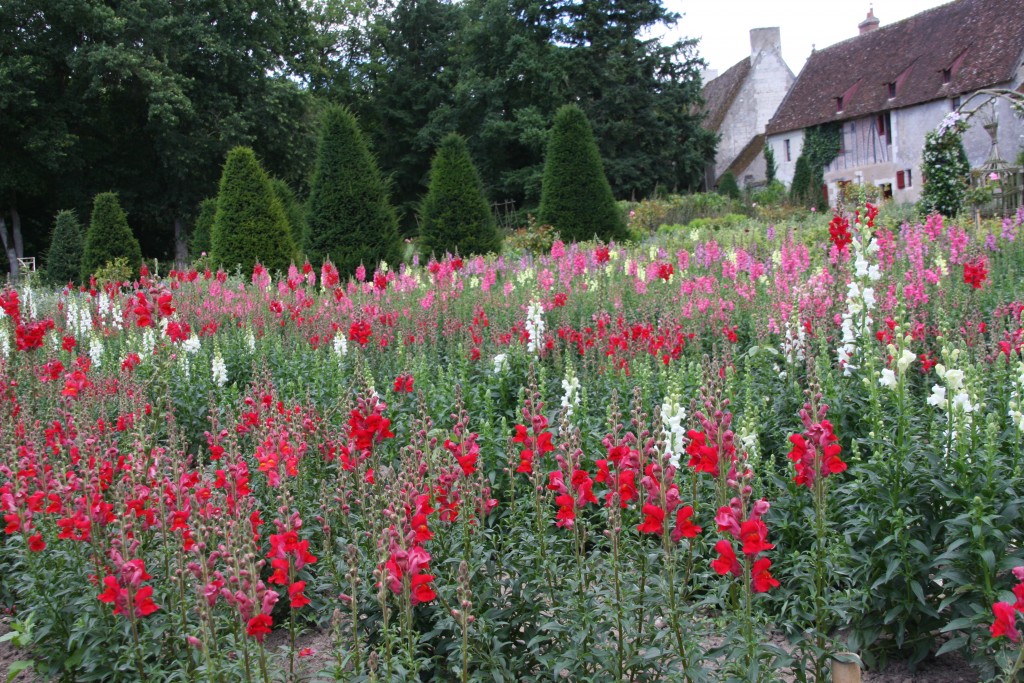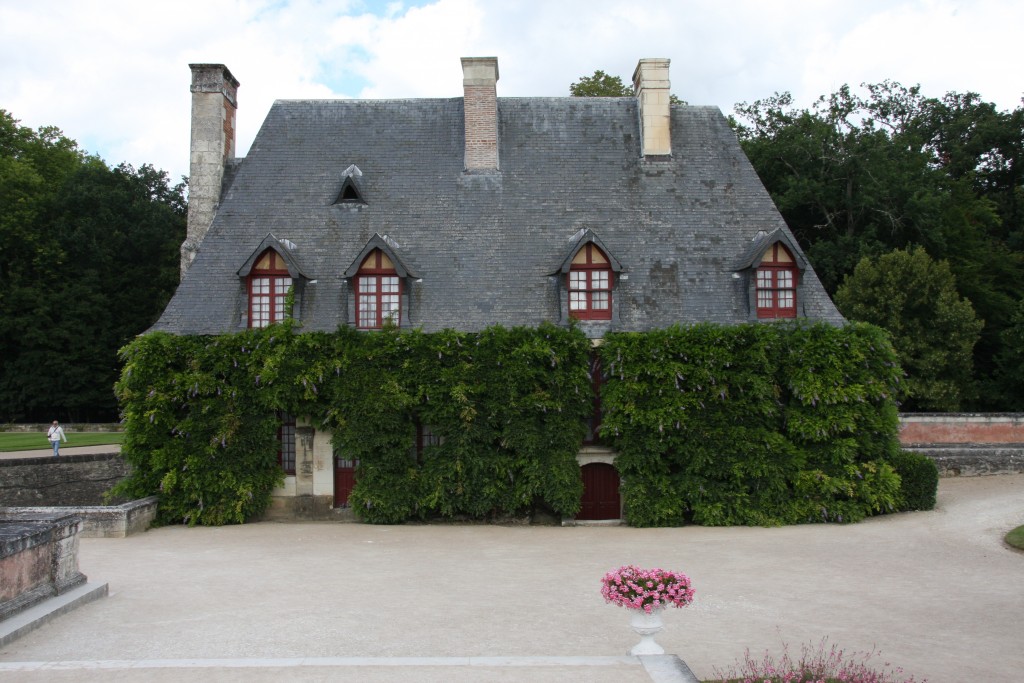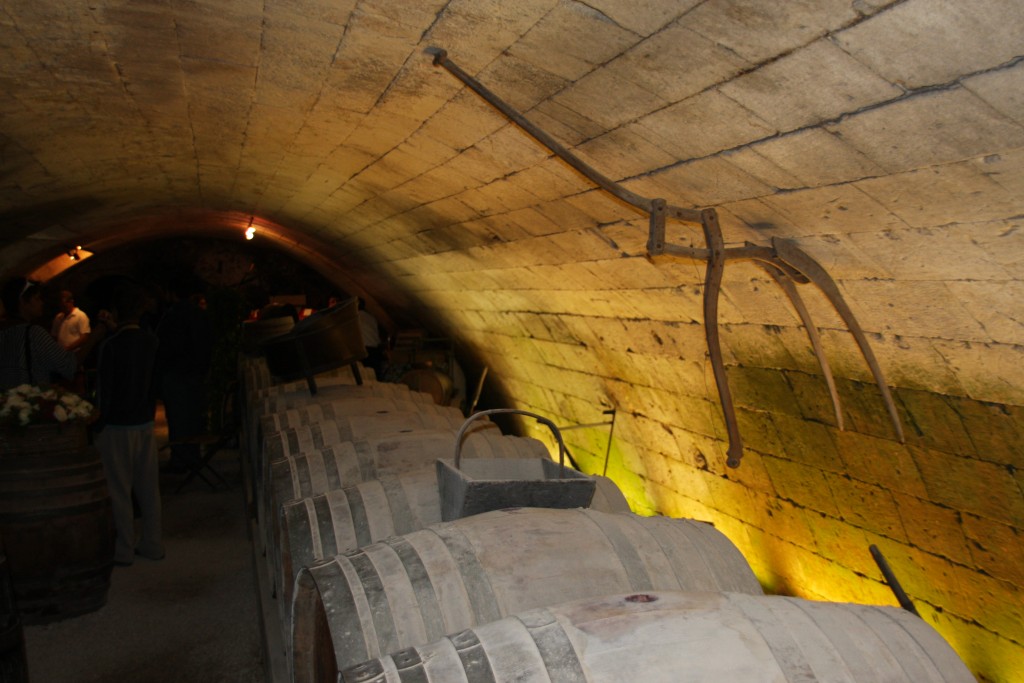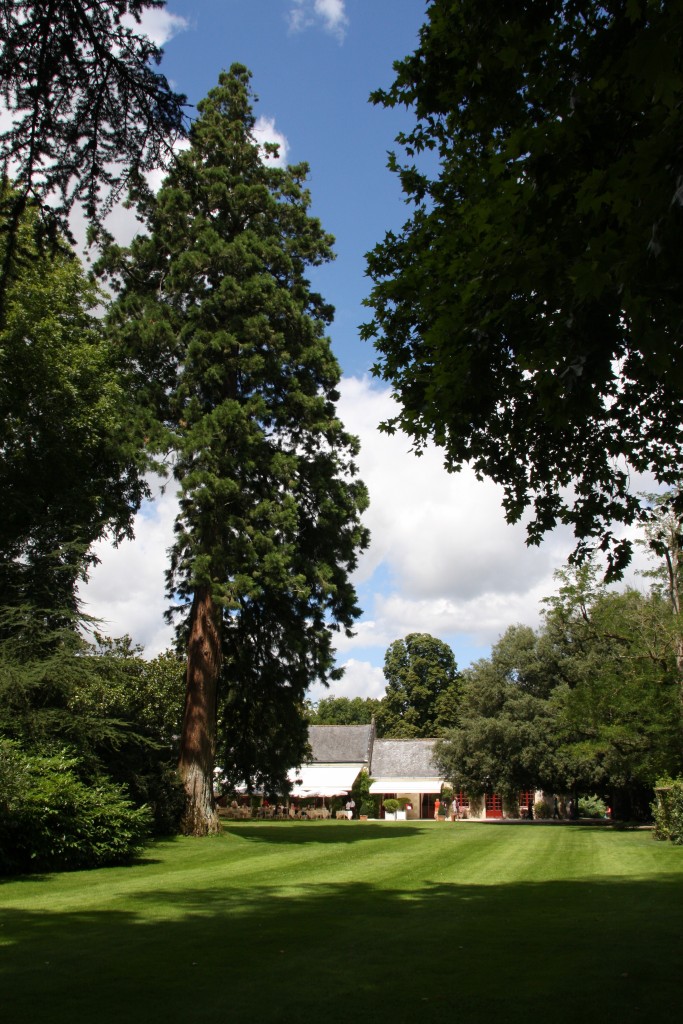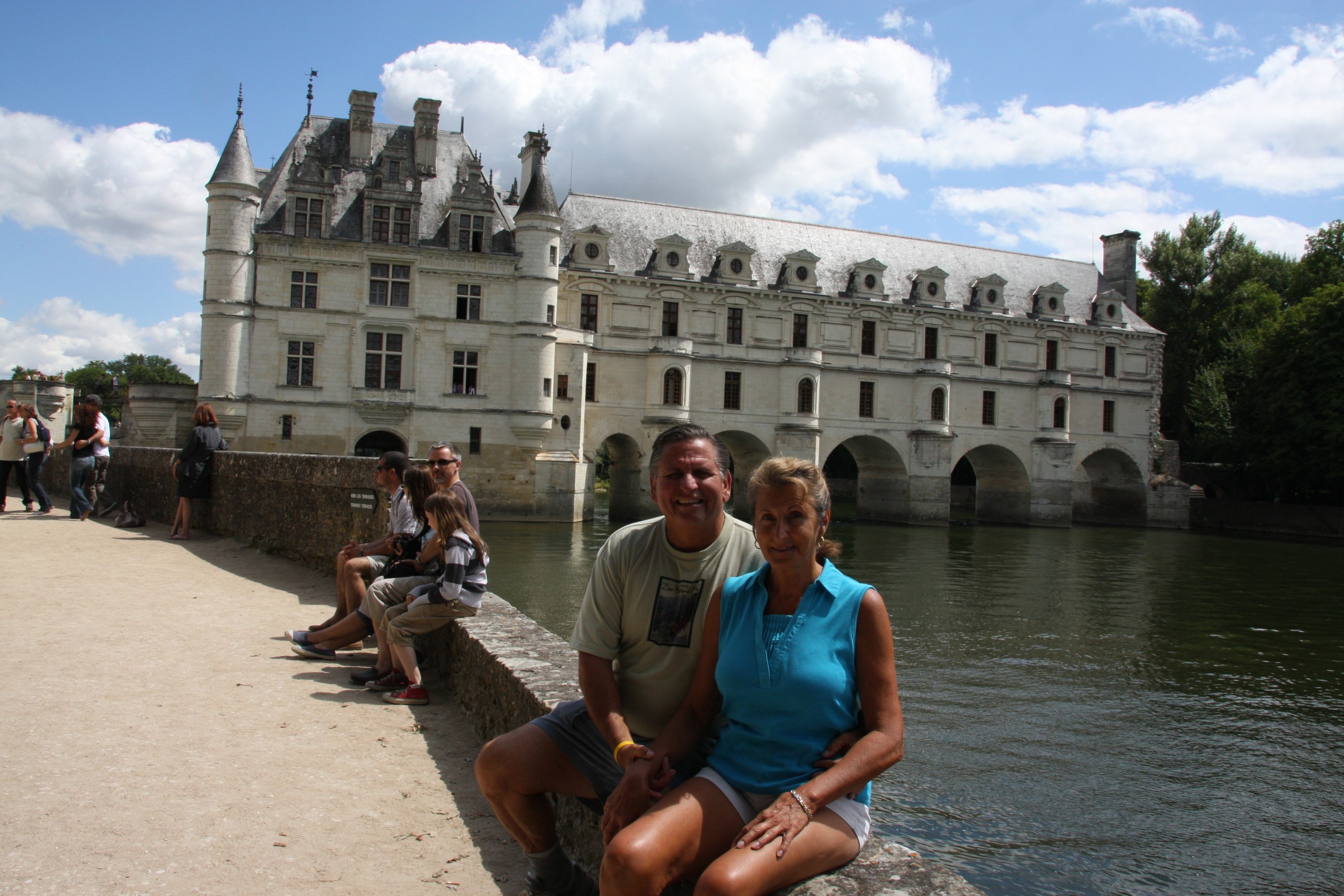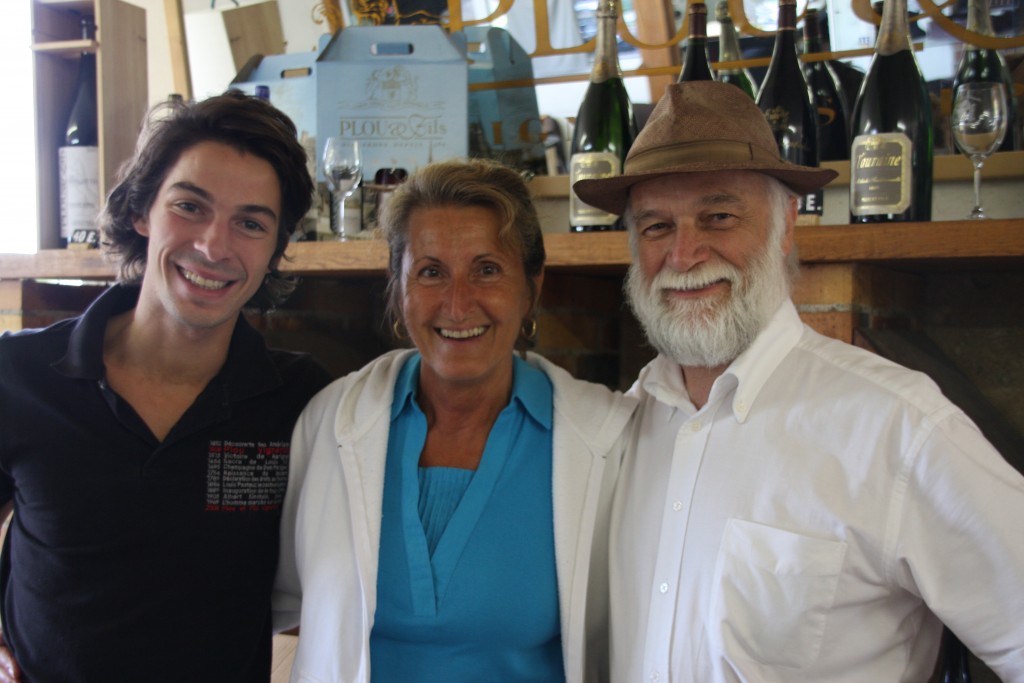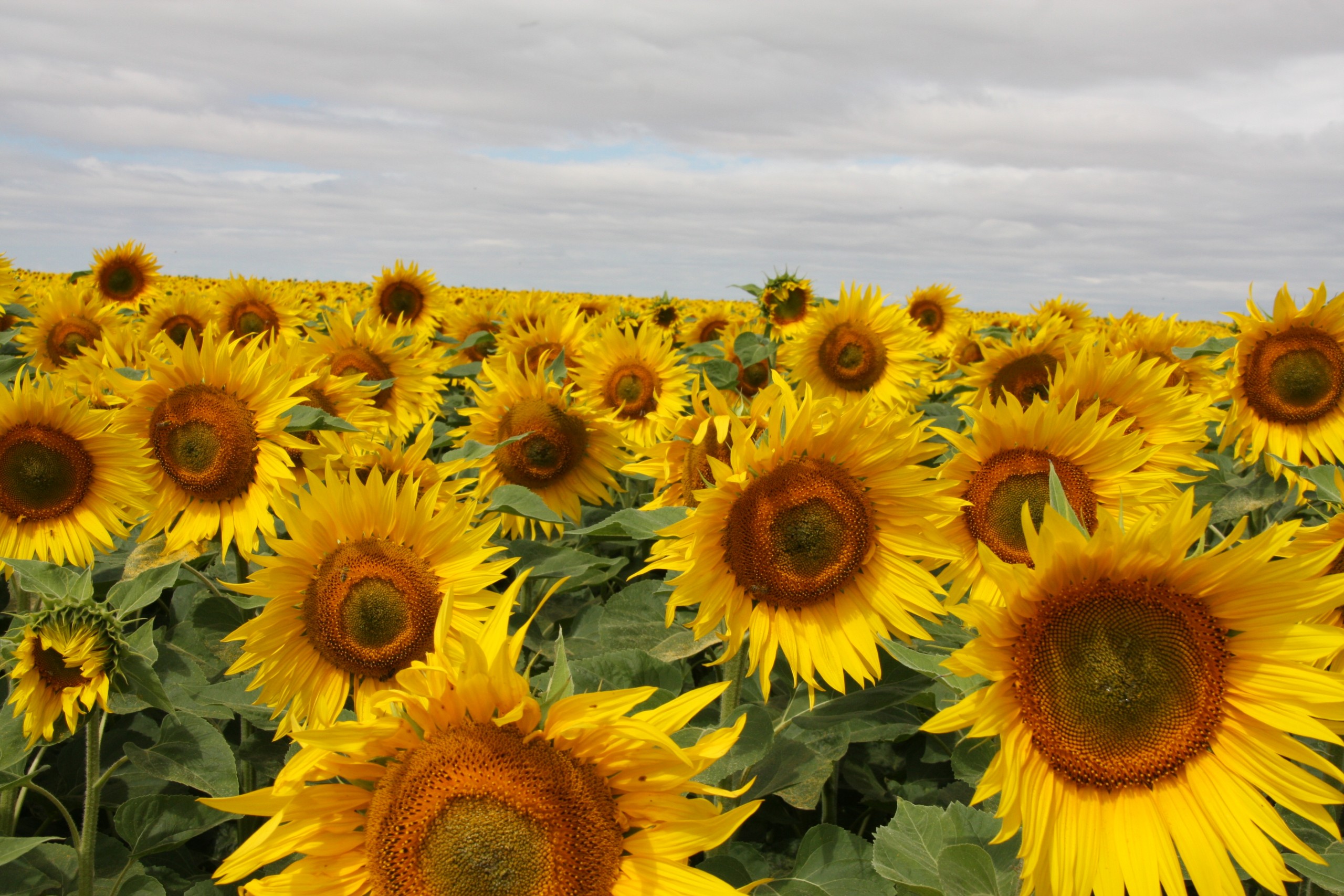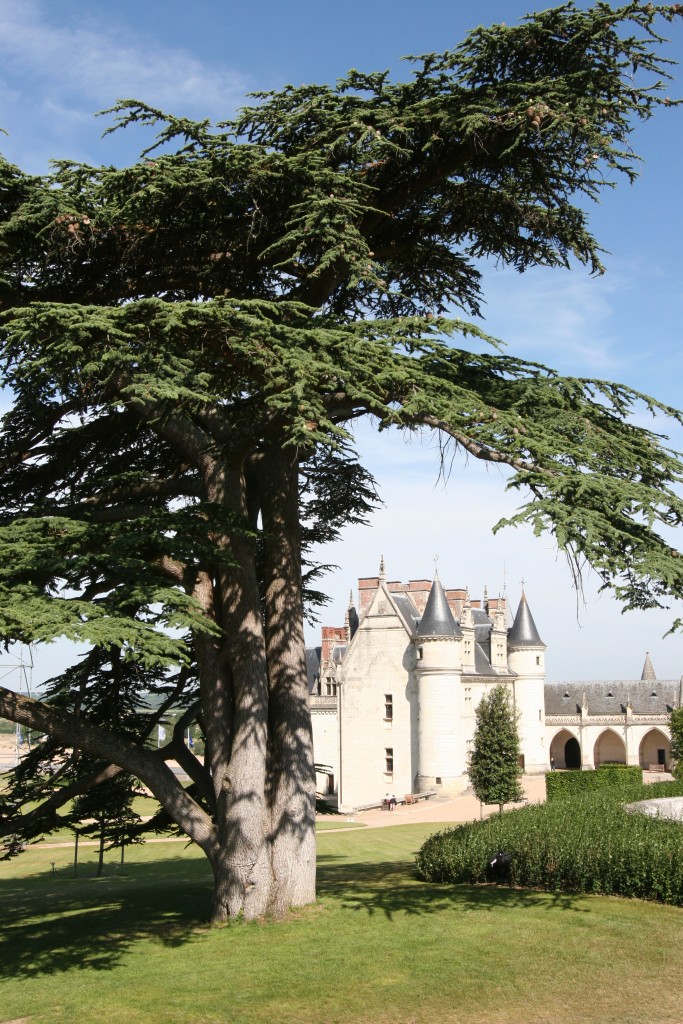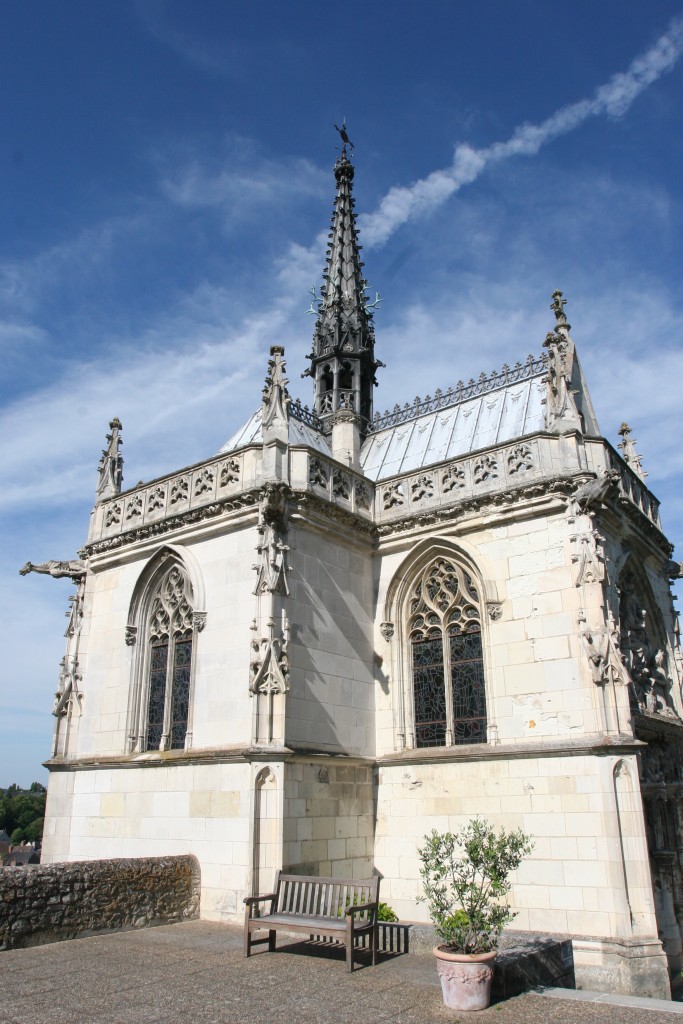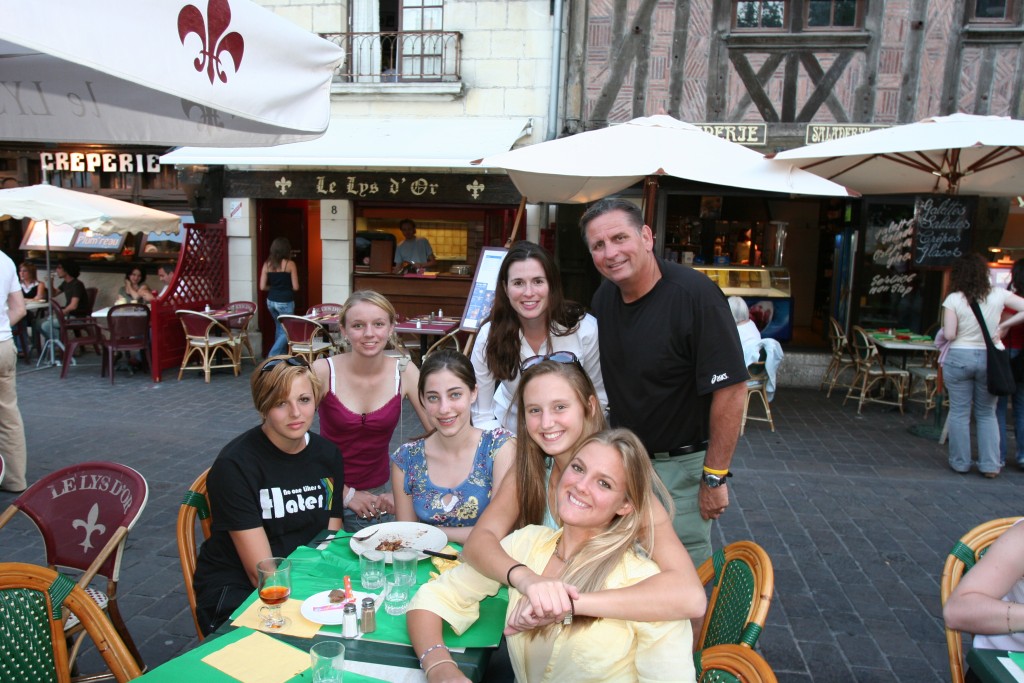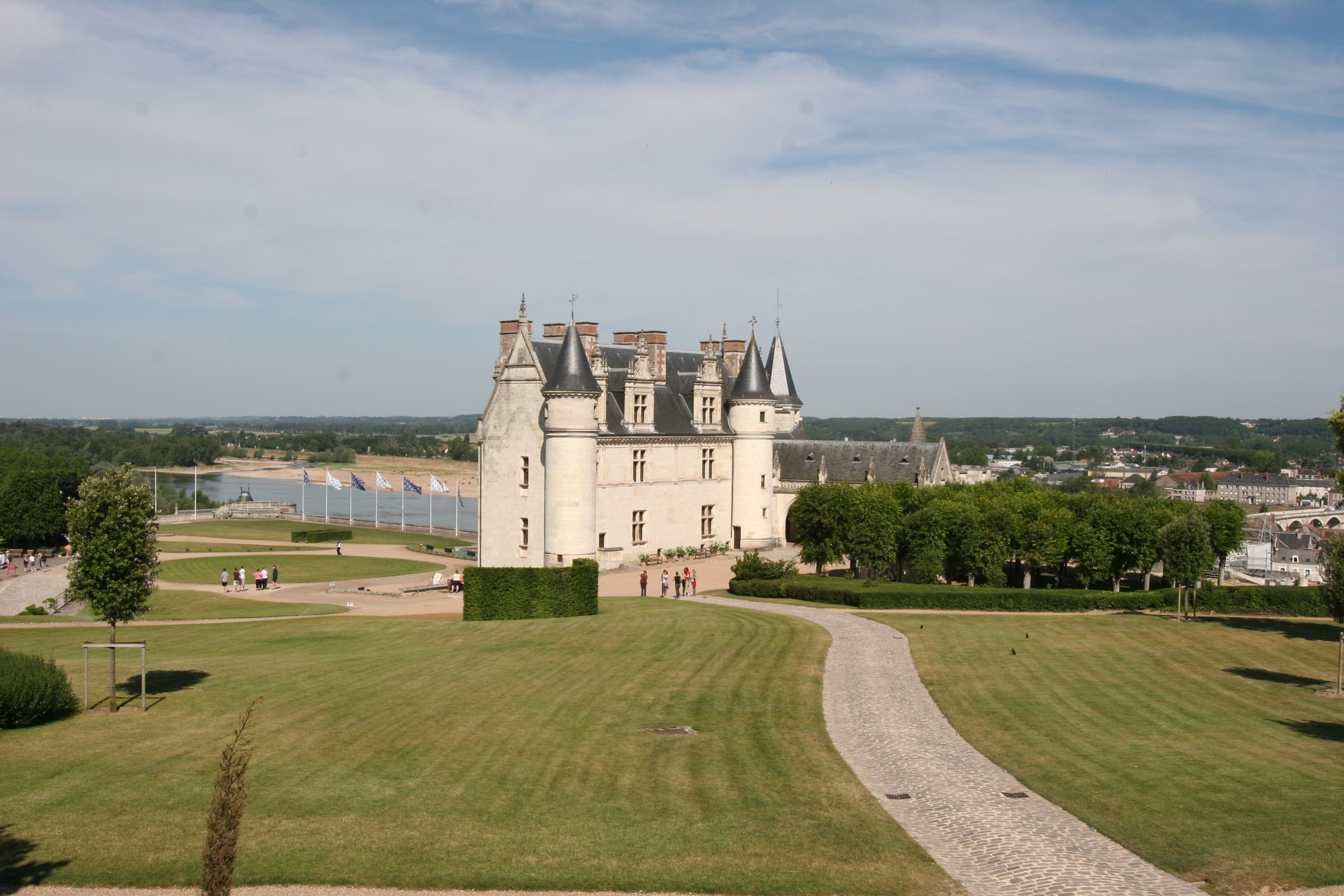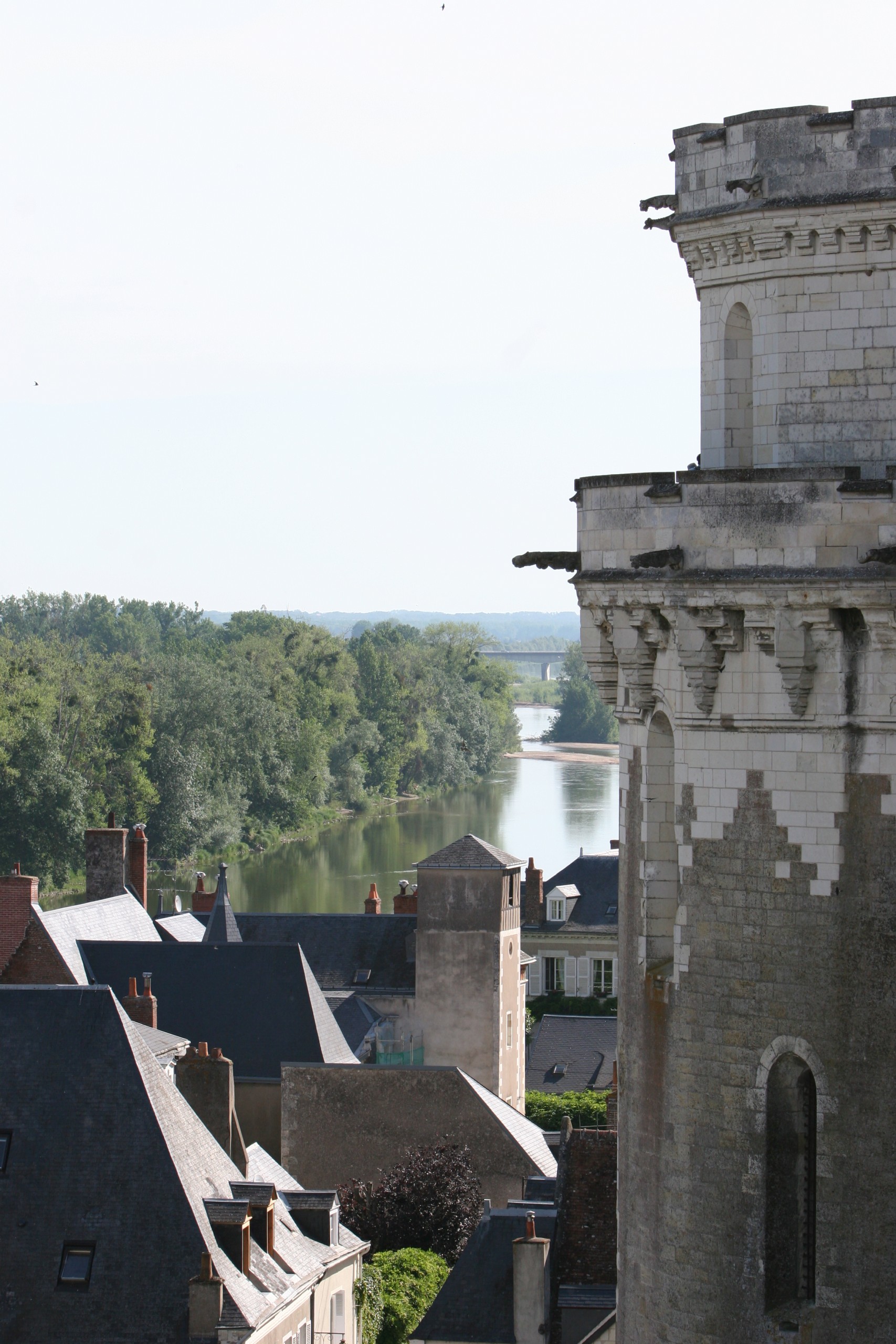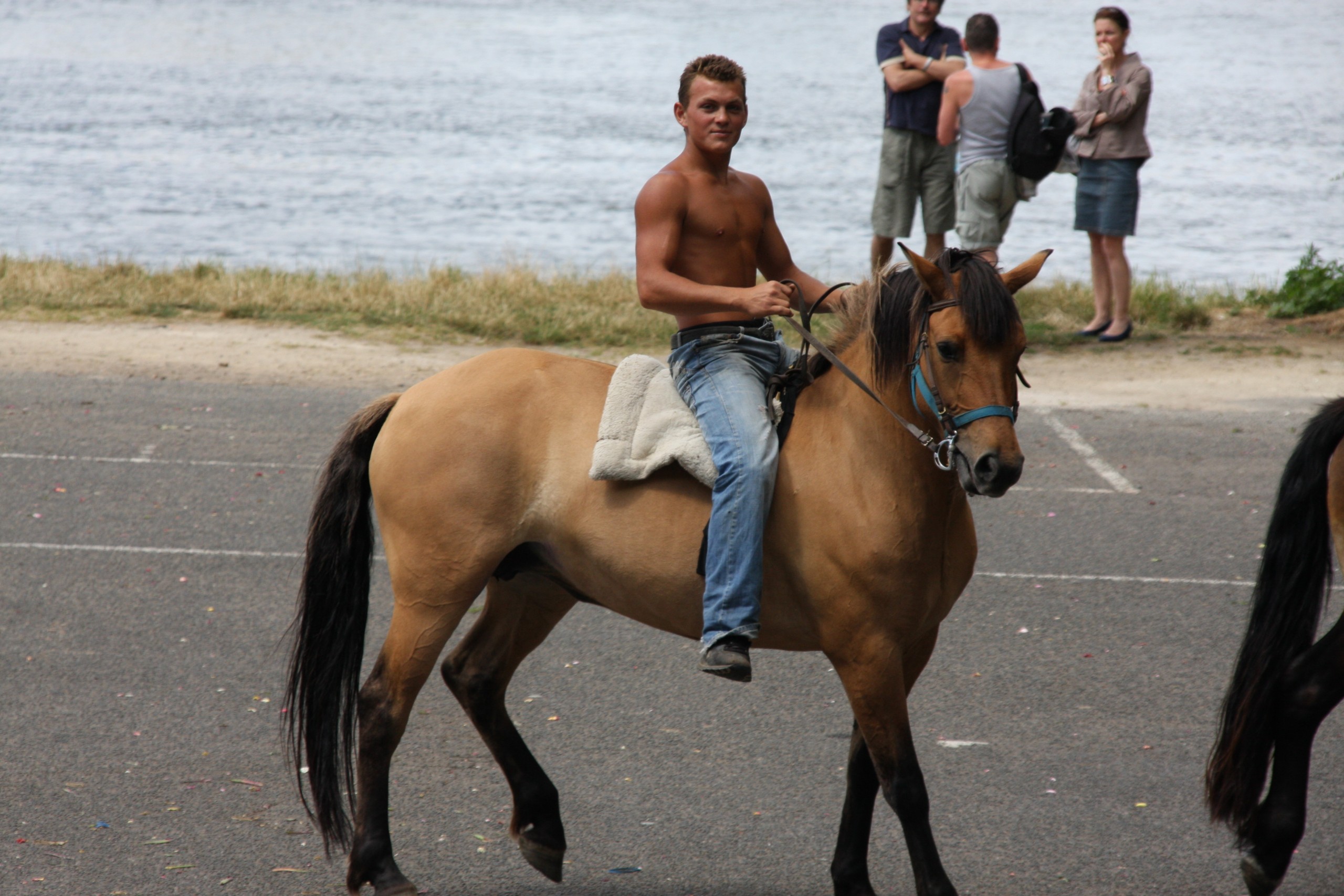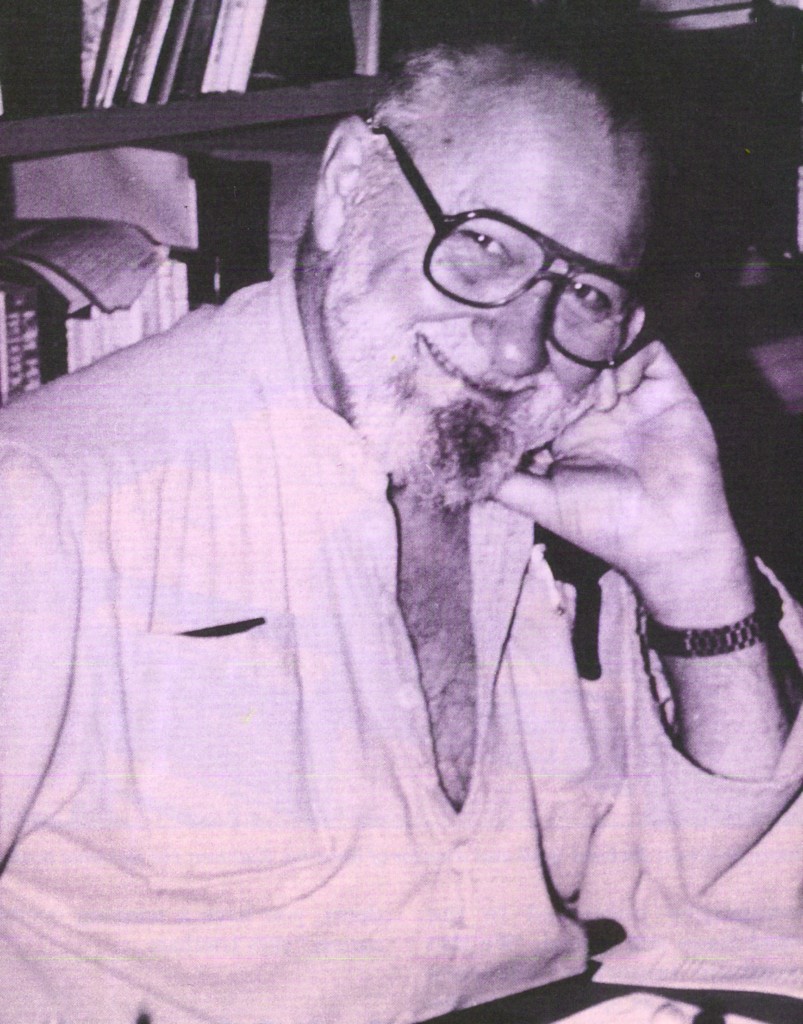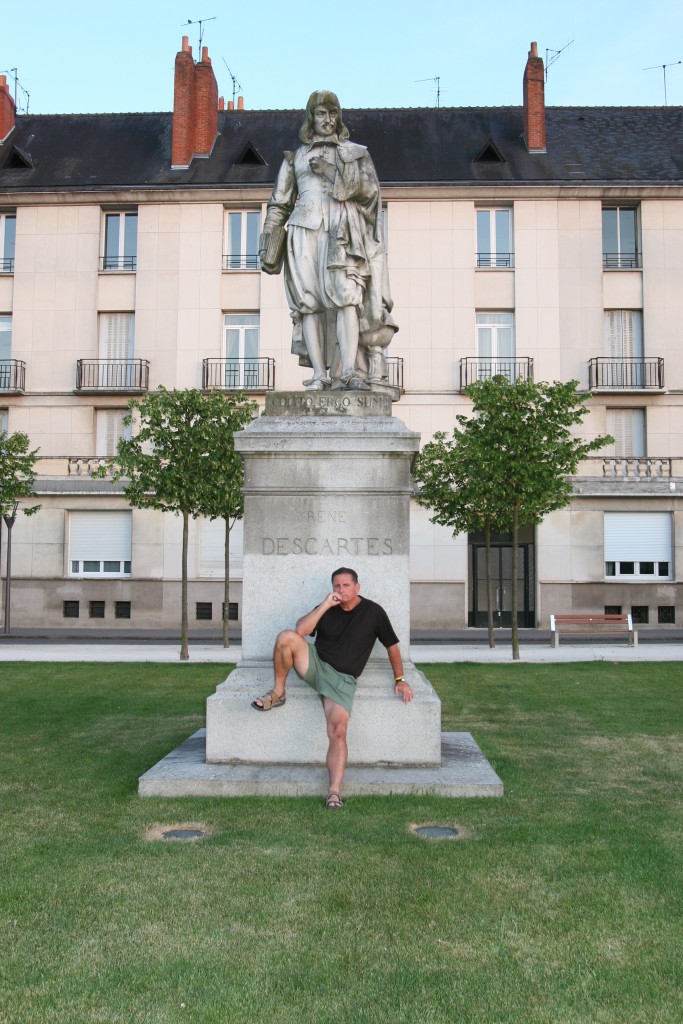If you take a guided tour, the usual time for a stop is about an hour. If you drive yourself, you make up your own limits. My wife and I took a train from Paris to Chartres in July 2008. Our car was waiting at the train station. We rode down the Loire Valley and across to Normandy. We dropped the car off in Caen in Normandy.
Our intention was to see the great Cathedral of Chartres, visit a number of famous chateaus and explore along the Loire River valley. The valley is 170 miles long with fields of vineyards. The region is referred to as “the Garden of France.”
We stayed one night in Chartres. We were able to see this beautiful Cathedral in the day light hours. The Cathedral dates back to the early 13th century. Many of the stained-glass windows are original.
The flying buttress of the Gothic style helped to reinforce the building and glass.
One of the spires reaches 377 feet while the second one is 349 feet. It was feared that the Germans were using the church to locate the Allies. American soldiers were ready to bomb the church during WW II, but due to the efforts of a reconnaissance by Colonel Welborn Barton Giffith, the cathedral was saved when they found out the Cathedral was abandoned. The bells were rung to signify the church was empty. Unfortunately, Colonel Giffith was killed that very same day.
And at night was entertained by a light-show off the front of the Cathedral. It was, indeed, spectacular.
We stayed three nights along the Loire River at Blois. Can’t say our sleeping quarters were unique, as we stayed in a Holiday Inn. The old town is quaint. There is a large statue of Joan of Arc, a most loved saint of France.
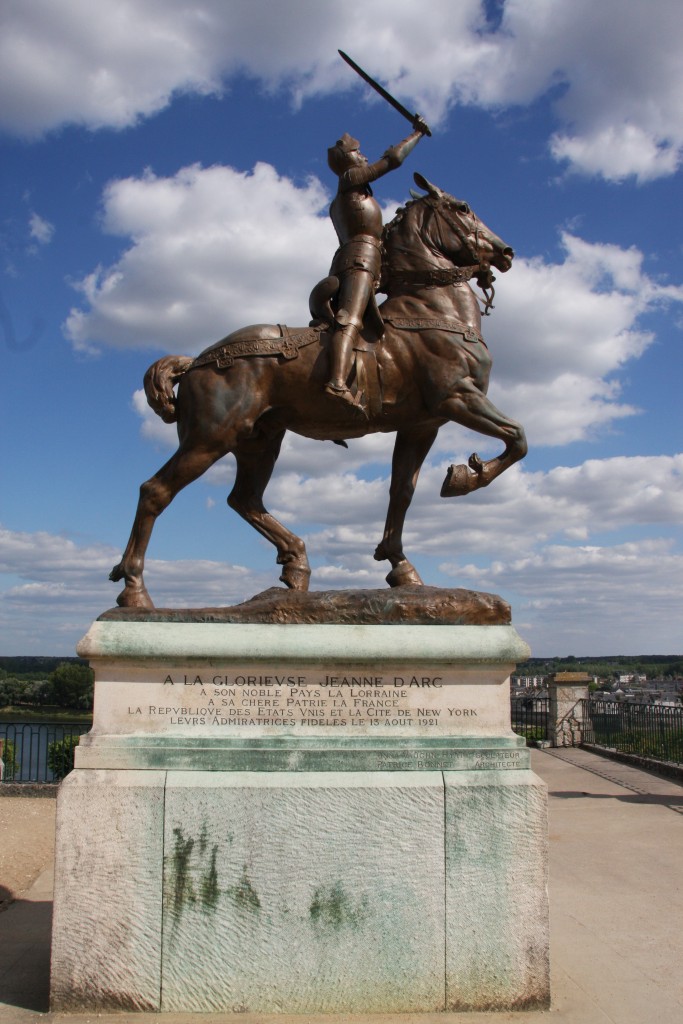
We spent our second day exploring the famous Chateau de Chambord. It is one of the most recognizable chateauxs in the world. It was built in the early 16th century for Francis 1st and served as a hunting lodge.
There are actually horse stables nearby.
Inside the grounds was a large bubble with an actual Simca Vedette Chambord card. This car was manufactured from 1954-61 by a French company called “Simca.”
Inside the Chateau de Chambord is quite barren.
The views on top are magnificent. As we were there in mid-day, we missed the famous nighttime lights that makes this chateau even more beautiful.
Our 3rd day, we made it to Chateau Chenonceau. This place was my favorite. I have been so fortunate to have visited Chenonceau in 1985, 1988, 2006 and 2008 with Kathie.

Chenonceau, along the River Cher, is the second most visited Chateau in France, the first being the Royal Palace of Versailles.
On my third visit, the main path down to Chenonceau was closed. I was able to get on my stomach to take this picture. I love all the Sycamore trees down this lane.
The current chateau was built in the early 16th century. The place eventually went into the hands of King Henry II who then gave it as a gift to his mistress, Diane de Poitiers. She was eventually ousted when the king died and Catherine de Medici took over. Catherine gave Diane Chateau Chaumont—not a bad looking place– along the Loire River.
During WWI, Chenonceau was used as a hospital ward. It did suffer some damage from both the Americans and Germans during WWII.
With Kathie in 2008, we were able to explore Chenonceau for several hours. We walked the property lines from one end to the other. The only wish I had was to walk on the other side of River Cher.
There are several extensive gardens. One is by the chateau.
Most tours never take you to the front of the property where there is another garden.
A house is close by which was closed to the public when we visited.
There is a winery on property too.
On the way back, we did stop at a winery that many tour busses stop at. Talking to the young man at the counter, we found out he had spent a semester at the University of Florida. It so happened I had in my possession a baseball cap from UF. I gave the cap to the young man. He was so happy. He, then, gave us several bottles of wine. The picture below is the dad—who could not speak English—the young man and my wife.
On our drive to Normandy we drove down to chateau Amboise. Along the way, we came to a field of beautiful “Daisey’s.”
Chateau Amboise was also our stop in the Student Trip in 2006.
Next to the chateau is chapel of Saint Hubert where Leonardo da Vinci is buried.
Amboise is a quaint town. Great cafe’s and shops.
The chateau itself became a favorite for French kings.
One of my favorite pictures is of a young French man riding a horse. I call the photo, “The French Cowboy.”
Seventeen miles west of Amboise is the city of Tours, where they have the famous race track. In 2006, we briefly stopped in Tours. I had a picture of myself in front of the statue of Rene Descartes. I vividly remember studying about him in my first and only Philosophy class with Dr. Anderson at Ohio Wesleyan. I loved this guy. I spent five hours writing six essays for our final exam. I was so happy with my C- grade.
The phrase, “I think, therefore I am” will always be a part of me.

